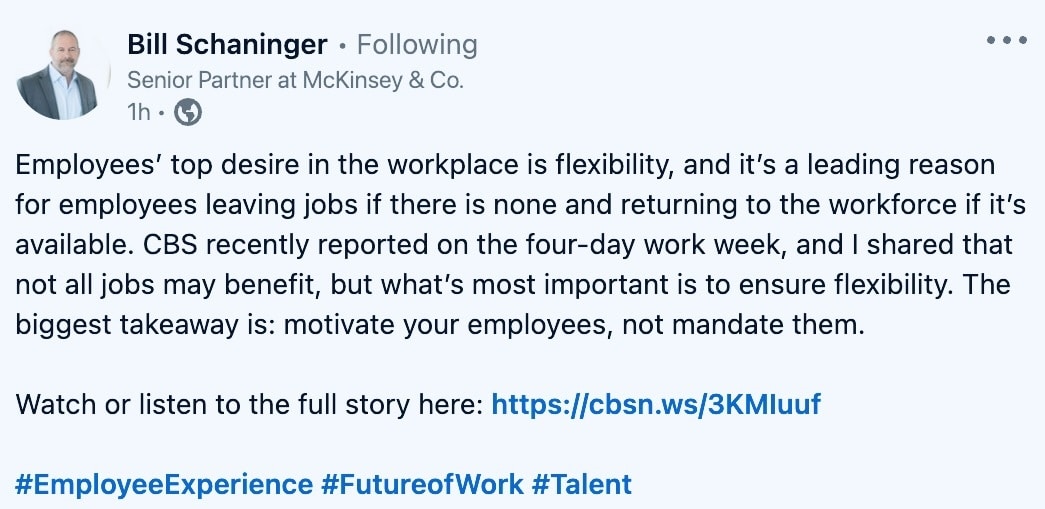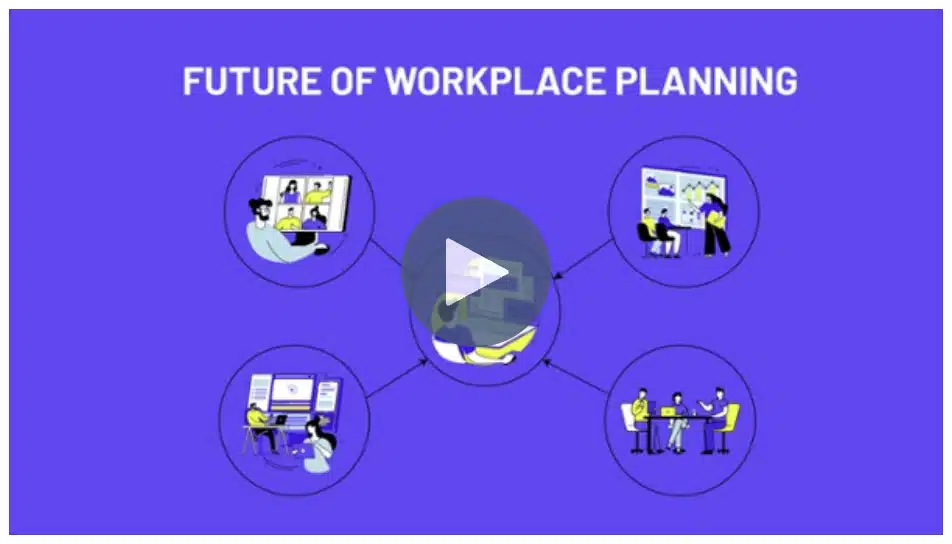When you distill the needs of the “Future of Work,” it all comes down to three major elements–people, space, and technology.
The future of the hybrid workplace
While the word “hybrid” has become a ubiquitous term to describe where the workplace is going, many are still confused with what exactly a hybrid office should look like.
As workplace and real estate teams reimagine workplaces to optimize for hybrid work styles, they’ve revealed that effectively balancing people, space, and technology allows their business to thrive in the future of work.
1. People needs
Addressing the needs–and wants–of your workforce is a crucial first step in understanding what your future workplace should look like.
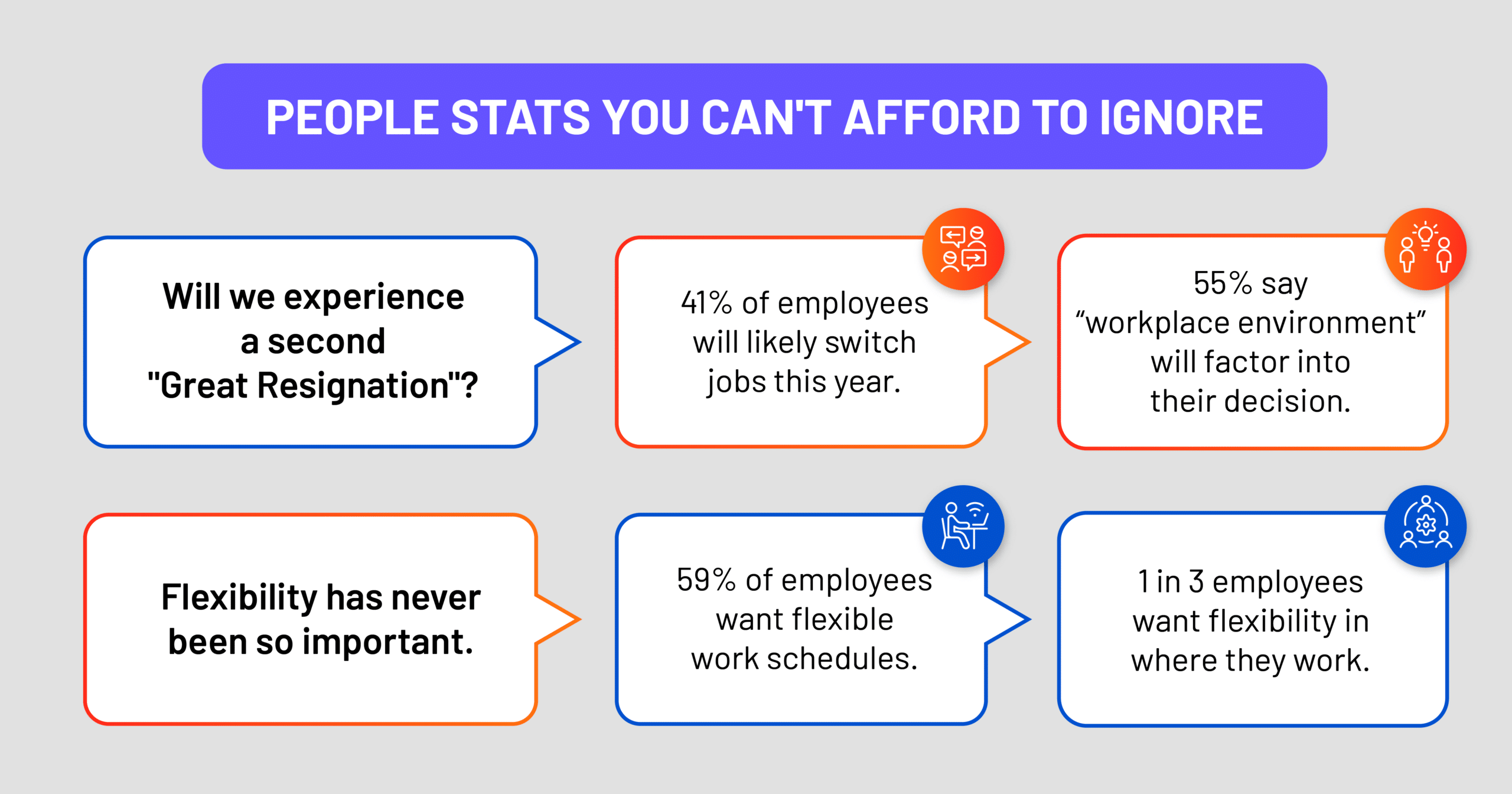 According to Density’s 2022 Employee Insights on Hybrid Work Report, 59% of employees want flexibility in when they work and 33% employees want flexibility in where they work–making the predictability of office attendance, even more ambiguous than it already is.
According to Density’s 2022 Employee Insights on Hybrid Work Report, 59% of employees want flexibility in when they work and 33% employees want flexibility in where they work–making the predictability of office attendance, even more ambiguous than it already is.
Forty-one percent of the global workforce is considering switching jobs this year and 55% mention that the workplace environment will be a factor in their decision–providing businesses with a unique opportunity to change the way they draw people back to in-person spaces.
These statistics reveal an important understanding–adapting to what employees want out of their workplace can ultimately influence the decision to stay at a company. In other words, it’s no longer, “if you build it [the office], they [employees] will come.” Employees expect more flexibility, better technology, and incentives to come to the office. If companies want to attract and retain talent, they must heed that call.
2. Space needs
In the first three months of 2022 alone, US commercial real estate investment hit a record breaking high of $292 billion.
Despite the fact that businesses are purchasing office space at record volumes as Covid restrictions loosen, the rapid influx of space being acquired doesn’t necessarily mean people will flock to workspaces.
According to The Future Forum, a survey of more than 10,000 global employees, almost half of executives want to be in the office every day while only 17% of employees said the same. Furthermore, on average, “office buildings sit more than half empty”–widening the disconnect between the purchasing of space and space actually being used.
For workplace teams, the true challenge lies in identifying how to redesign and realign spaces to fit the needs of changing work styles, worker preferences, and workforce trends. Resource allocation is an uphill battle. Understanding spatial needs requires companies to engage, research, and initiate interaction with employees and find ways to understand what reimagined space would look like.
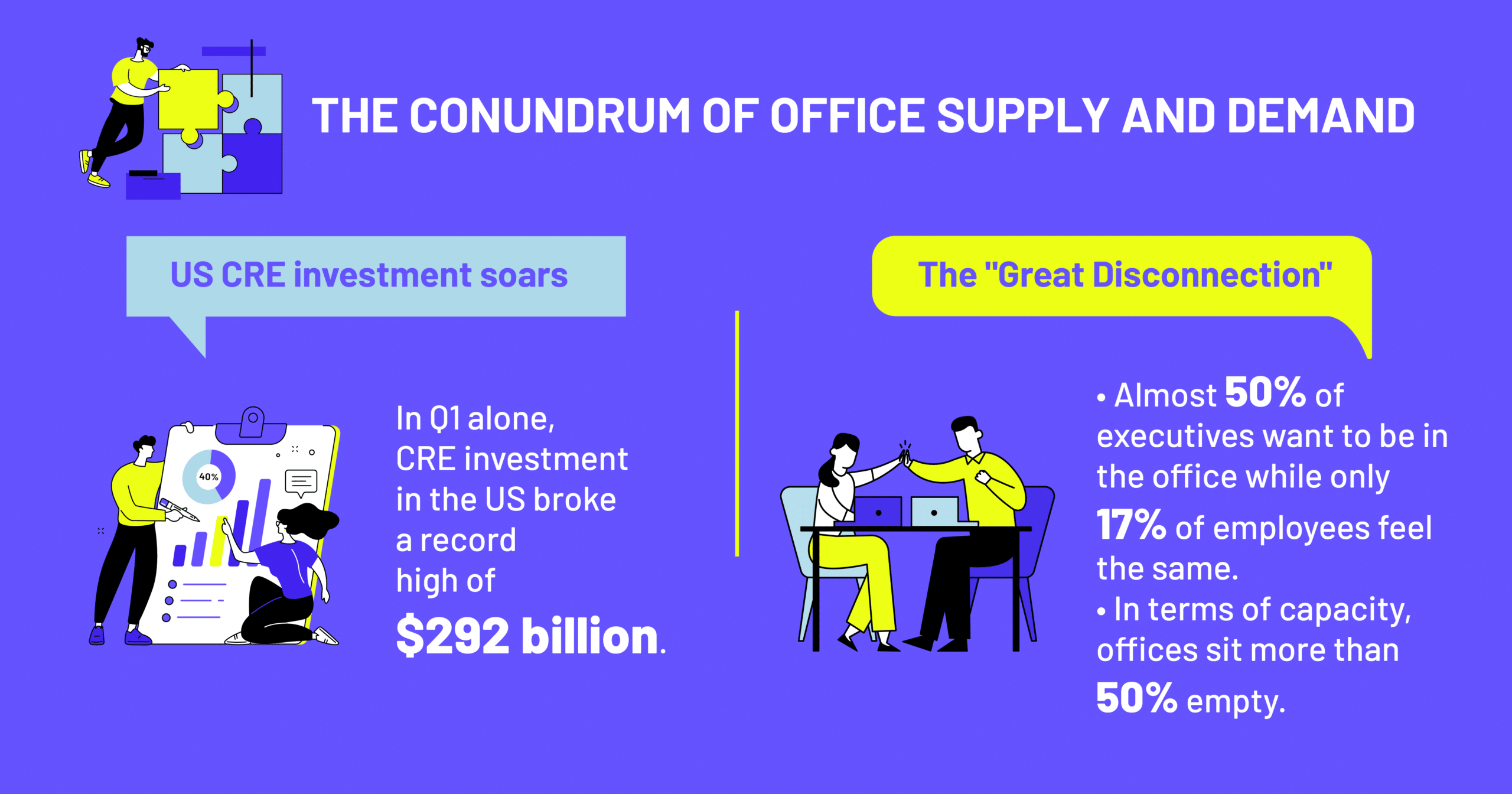 In short, spatial design decisions should be fueled by employee needs and desires–if employers desire their employees to return to the office, they need to create a workplace that their employees desire to use. None of which will be accomplished in a day. Companies cannot reasonably understand and execute such an office in a single initiative; however, making incremental changes, iterating space, and looking at the workplace as a spectrum, can help eliminate binary biases affecting workplace decisions.
In short, spatial design decisions should be fueled by employee needs and desires–if employers desire their employees to return to the office, they need to create a workplace that their employees desire to use. None of which will be accomplished in a day. Companies cannot reasonably understand and execute such an office in a single initiative; however, making incremental changes, iterating space, and looking at the workplace as a spectrum, can help eliminate binary biases affecting workplace decisions.
3. Technology needs
Tying people and space needs together by way of innovative technologies is how the hybrid workplaces of tomorrow will succeed.
While 33% companies have introduced new technologies to help with their return to office strategies, a whopping 72% of businesses lack a clear hybrid work strategy.
Companies have had to digitize workflows faster than they would like but this has accelerated the wave of digitization that was long overdue. However, sudden adoption has left many businesses uncertain about the appropriate tools they need. And while there are plenty of options to choose from, point based solutions have enticed companies to meet their uncertain needs and equipped them to address the current situation. The real question is whether the solutions adopted can work cohesively together, long-term.
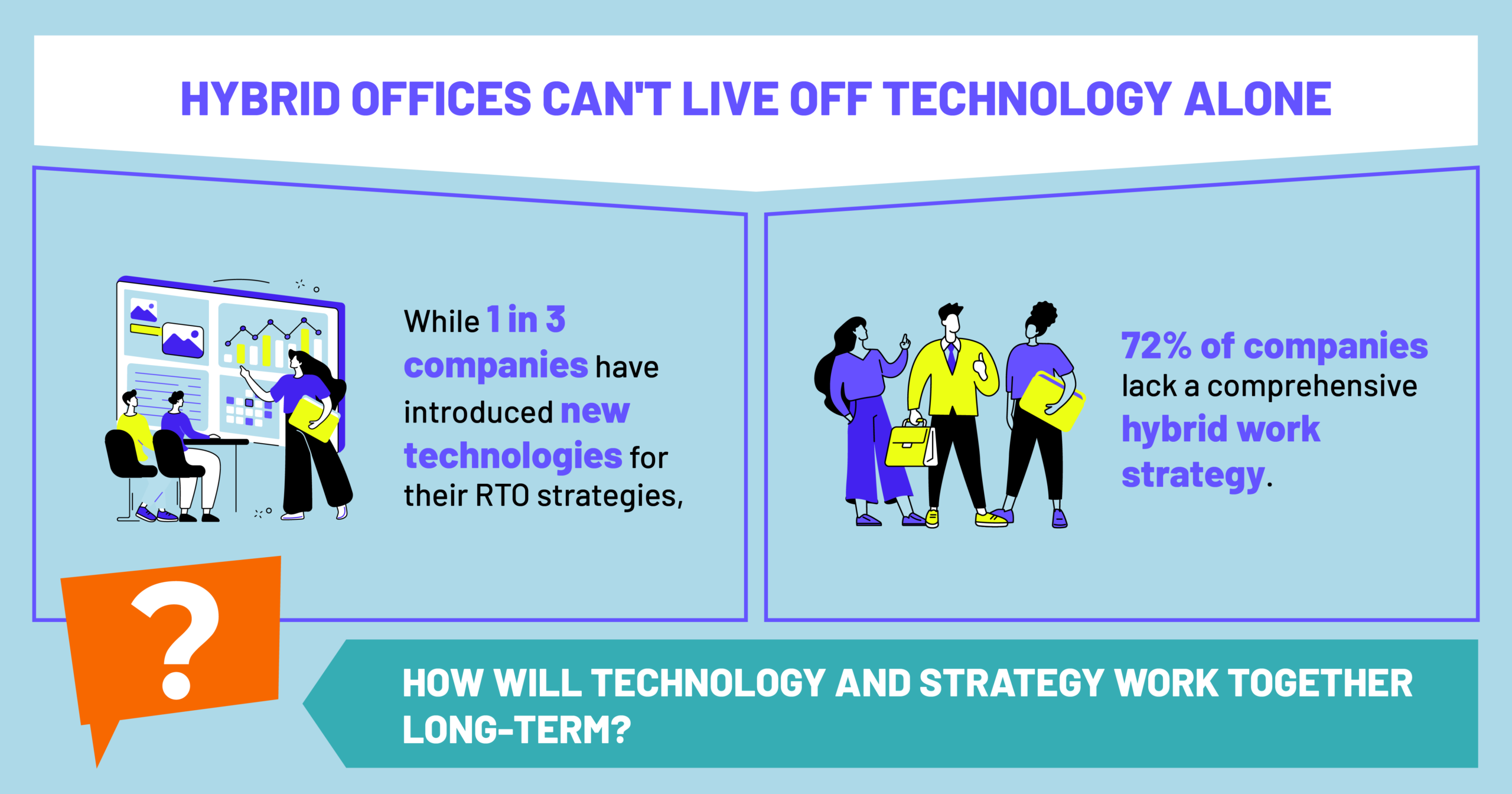 An ideal solution would be a system that is flexible and adaptive to the evolving needs of the workplace and should integrate siloed systems and datasets so spatial performance can be visualized, over time.
An ideal solution would be a system that is flexible and adaptive to the evolving needs of the workplace and should integrate siloed systems and datasets so spatial performance can be visualized, over time.
Tying together people, space, and technology needs
Better understanding your space is crucial to offering flexible, hybrid spaces. However, fragmented technologies that fail to communicate with one another often get in the way of leveraging the actionable data points necessary to design and strategize the workplaces of tomorrow.
Having a solution that provides and leverages actionable insights will help workplace and real estate teams better plan, strategize, and execute their future workplace ecosystem. The right workplace technology will tie together the people, space, and technology needs essential to deliver an engaging and productive hybrid workplace.
Saltmine can be the keystone solution that can bear the weight of all three and be the essential single source of truth for workplace data analysis, floorplan customization, and space planning.
To learn how Saltmine can help you deliver a flexible, hybrid work strategy in less time so you can provide a better employee experience, watch the video below:
Enjoying our blog? Be sure to subscribe to stay up-to-date on Saltmine's original content with the form below!
 by
by 